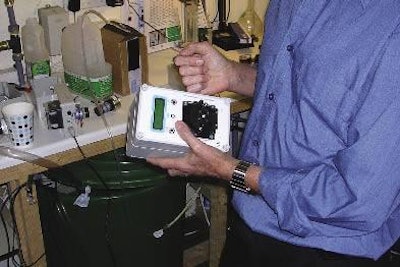
Water application of vaccines and medicines to pigs is the way of the future, a group of leading veterinary practitioners heard recently at a meeting in the UK.
The arrival of the first oral vaccine for piglets and the likelihood of more in the future bring the promise of improved control of several endemic and productivity-limiting diseases such as ileitis. With this, a decreased dependency on antibiotics to treat pigs will become a real possibility.
But one of the main arguments for the switch to administering pig vaccines by water will be a savings in labour, said the presentation sponsored by Boehringer Ingelheim Vetmedica and hosted by Dosing Solutions Ltd. It is well recognised that the delivery of vaccines through the drinking water eliminates labour by reducing both the need to handle pigs and the number or duration of interventions required. More importantly, however, as more oral vaccines appear on the market, producers will be able to consider using water proportioners for the vaccination of heavier pigs at times other than at the conventionally most convenient weaning and pre-weaning period. This reduces the limitations in terms of the labour and physical requirements of administering multiple vaccines.
From a current perspective, the drinking water was called an ideal vehicle for delivering the vaccine now available in the UK to deal with Lawsonia intracellularis, the ileitis bacteria which occur among pigs on most British farms some time after weaning. According to the presentation, use of the Enterisol Ileitis vaccine has been shown to deliver a return on investment of between 3:1 and 3.5:1 as a result of improvements in growth, feed efficiency and batch uniformity.
A particular reason for the meeting was to discuss the practicalities of water vaccination. The veterinarians were told that administration by a water proportioner provided a reliable and accurate means of delivering medicines and vaccines to pigs. Every unit in future can expect to have a proportioner as part of its watering equipment. There will be a quick payback of the relatively small investment required for installing the device and associated pipework, through savings in labour and the increased opportunity of employing more productivity-enhancing vaccine strategies such as the control of ileitis.
The advantages were promoted of choosing a doser or proportioner that used peristaltic pump technology of the type found in medical settings. Such a system was called preferable because its accurate delivery of medicines and vaccines into farm water systems is done without allowing these materials to come into contact with the mechanics of the device. Having a flow-meter integrated with the doser allows the flow of water to the pigs to be measured continuously. The collection of data can also be automated for computer-aided analysis, with SMS text alerts set to warn of any extraordinary increases or decreases in flow rates that may give an early warning of health, feed or water supply issues. PIGI

















